Pros & Cons of Borrowing from Your 401(k)
When you put money into a workplace retirement plan like a 401(k) or 403(b), the goal is simple: save for the future. But life doesn’t always go according to plan. Emergencies arise, and sometimes, accessing your retirement savings might feel like your only option.
While not ideal, borrowing from your 401(k) or making a withdrawal can be a lifeline in tough times. The key is to proceed carefully, understanding how these decisions may affect your long-term financial health.
Loans vs. Withdrawals: What’s the Difference?
If you're considering tapping into your retirement account, it's important to know the distinction between loans and withdrawals.
A 401(k) loan allows you to borrow money from your account and pay it back over time—usually with interest. That interest doesn’t go to a bank or lender, but rather back into your own retirement account. It’s like loaning money to yourself.
A withdrawal, on the other hand, is a permanent removal of funds. There’s no repayment required, but the consequences can be more severe, including taxes and penalties.
Let’s take a deeper look at how each option works—and what the pros and cons might be for your unique situation.
401(k) Withdrawals: Immediate Access, Lasting Consequences
In some cases, you may qualify for what's known as a hardship withdrawal. The IRS defines certain events as valid reasons for a hardship withdrawal, including:
Large medical expenses
Preventing foreclosure or eviction
Paying tuition or educational fees
Funeral costs
Major home repairs due to disaster
Some plans may also offer non-hardship withdrawals, but this depends on your employer’s rules. Be sure to check with your plan administrator to understand what’s allowed.
Pros:
No repayment is required.
You get immediate access to the funds.
Cons:
The amount withdrawn is subject to ordinary income tax.
If you are under 59½ years old, you may have to pay a 10% penalty for early withdrawal. This is unless you meet certain exceptions.
Once the money is out, it loses the chance to grow tax-deferred over time.
401(k) Loans: Borrowing from Yourself—With Rules
Most retirement plans allow loans of up to 50% of your vested balance or $50,000, whichever is less. If your vested balance is less than $20,000, you might still be able to borrow up to $10,000, depending on your plan.
Typically, you have up to five years to repay the loan, with payments made through payroll deductions. Interest is also charged, but it goes right back into your own account. If you leave your job, the time to repay often gets much shorter. Any unpaid balance may be seen as a distribution, which means you could face taxes and penalties.
Pros:
No credit check required
No taxes or penalties if paid back on time
Interest repaid to yourself
Doesn’t affect your credit score if you default
Cons:
You lose investment gains on the borrowed amount
Leaving your job could trigger an early repayment requirement
Defaulted loans become taxable distributions and may incur penalties
When a 401(k) Loan Could Make Sense
Borrowing from your retirement account for non-essential purchases like vacations or gifts is rarely a wise move. However, under the right circumstances, a 401(k) loan could actually strengthen your finances.
Examples:
Paying off high-interest credit card debt can reduce overall interest payments and help you regain control of your budget.
Financing a home improvement project can be a smart choice. This is especially true if other funding options are limited.
If you do choose to take a loan, here are some tips:
Stick to the smallest amount necessary
Make payments on time and in full
Keep contributing to your retirement plan while repaying the loan to avoid falling behind on your long-term goals
Consider the Alternatives First
Before dipping into your 401(k), it’s wise to exhaust other avenues:
Tap into an emergency fund
Use a Health Savings Account (HSA) for qualified medical expenses
Transfer credit card balances to a low- or zero-interest card
Use a personal loan or home equity line of credit (HELOC)
Withdraw contributions from a Roth IRA—tax- and penalty-free (note: earnings may still be taxed)
Each option has its own advantages and disadvantages. However, they usually help your retirement savings stay safe and keep growing.
Final Thoughts
Accessing funds from your 401(k) should be a last resort, not a first option. But when used wisely and with a clear repayment strategy, it can serve as a temporary bridge through financial hardship. Just remember—your retirement money is meant for your future self. Use it carefully today so you don’t shortchange tomorrow.
Sources:
https://www.fidelity.com/viewpoints/financial-basics/taking-money-from-401k
Disclosure:
This information is an overview and should not be considered as specific guidance or recommendations for any individual or business.
This material is provided as a courtesy and for educational purposes only.
These are the views of the author, not the named Representative or Advisory Services Network, LLC, and should not be construed as investment advice. Neither the named Representative nor Advisory Services Network, LLC gives tax or legal advice. All information is believed to be from reliable sources; however, we make no representation as to its completeness or accuracy. Please consult your Financial Advisor for further information.

